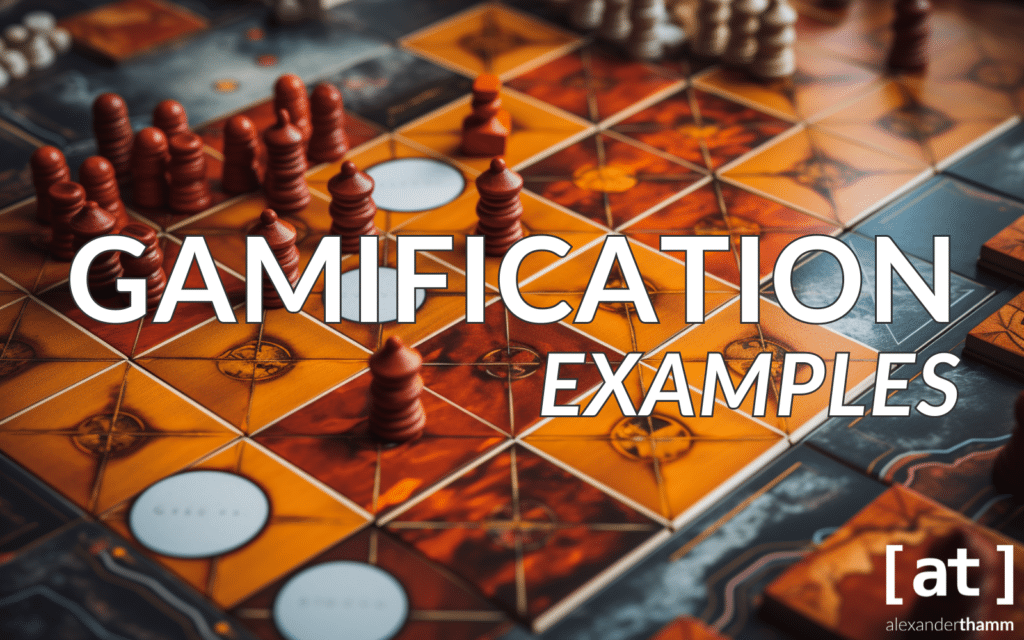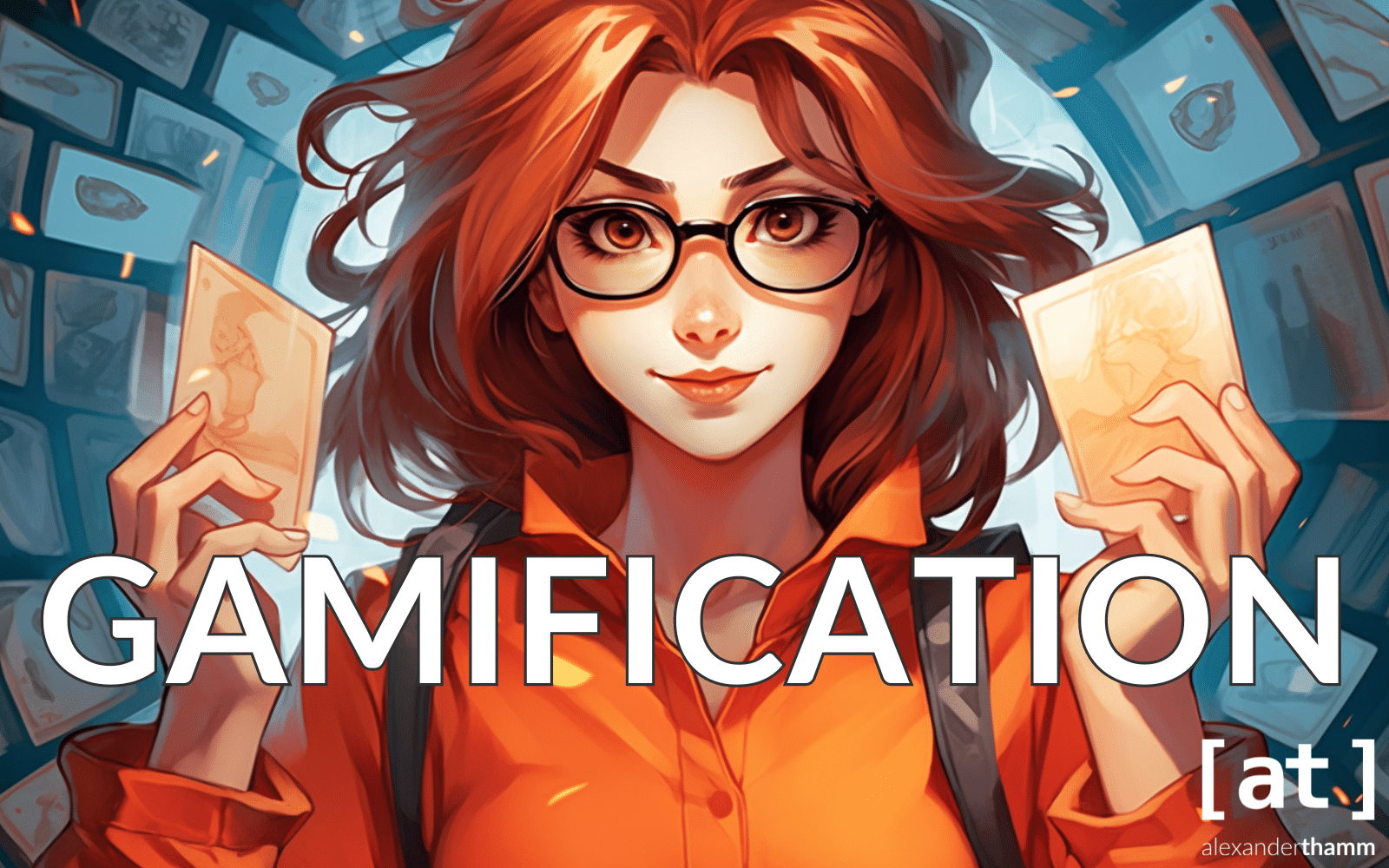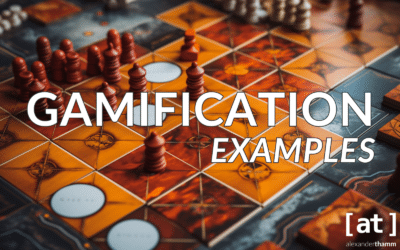Gamification is changing the way we learn and work. At its core, it is about using game-like elements in environments that are not games, such as schools and workplaces. This approach is gaining traction in both the education and corporate sectors, and for good reason. In education, gamification turns learning into an interactive and engaging experience. Instead of traditional lectures, students take on challenges, receive rewards and progress through levels, making education more engaging and fun.
In the business world, gamification is revolutionising training and operations. It's not just about making work more enjoyable; it's a strategic tool that boosts employee engagement, motivates teams and increases productivity. The secret behind the success of gamification lies in its unique blend. It combines technology that provides immersive and interactive platforms with psychological principles that appeal to our natural desire for competition and achievement. Pedagogical theories also play a crucial role, ensuring that gamification supports learning objectives and skill development. Together, these elements create powerful experiences that make learning and working effective and enjoyable.
Inhaltsverzeichnis
What characterises gamification in education and training?
Gamification in education means making the learning process even more exciting. That's what it's all about, Adopt elements from games - such as points, levels and rewards and use them in the education sector. The aim? To make learning more engaging and interactive. Think of it as a bridge between traditional teaching methods and the interactive world of games that students love.
With this approach, the Pupils not just passive listeners. They become active participants in their learning journey. Gamification turns lessons into missions, homework into quests and challenges into games. It's not about playing video games in class, but about applying game-like elements to educational content. For example, students can earn points for completing tasks, move up a level when they master a topic, or earn badges for outstanding achievements. This system encourages students to engage more deeply with the material, making learning a more dynamic and enjoyable experience.
Gamification also plays a crucial role in training and continuing professional development. Skills such as problem solving, critical thinking and adaptability are crucial in the rapidly evolving labour market. Gamification helps develop these skills by providing real-life scenarios in a controlled, game-like environment. For example, a simulation game could teach business students about market trends and decision-making under pressure, preparing them for the challenges of the real business world.
One of the biggest benefits of gamification is its impact on engagement and retention. When learning feels like a game, students are more likely to actively participate and memorise the material. This Increased commitment leads to better retention of the information as the interactive elements help to embed the knowledge in the students' minds. Gamification also enables immediate feedback so that students can immediately recognise their progress and areas for improvement.
Gamification also offers a unique Possibility to measure learning success. Unlike traditional tests that assess knowledge at a specific point in time, gamification tracks progress over a longer period of time, providing a more comprehensive overview of a student's learning process. It helps teachers to recognise which areas students are particularly good at and where they need more support, leading to a more personalised and effective learning experience.
Gamification in education is about bringing the fun and engagement of games into the learning process. It is a powerful tool that makes learning more fun, effective, customised and relevant to the real world.
How do companies use gamification?
In the business world, gamification is something of a secret weapon for increasing productivity and engagement. Companies are integrating game-like elements into various aspects of their operations, from employee training to product development. The idea is simple: when work tasks feel more like a game, employees are more motivated to complete them.
- Employee training and workshopsHere, gamification turns learning new skills into an interactive experience. Instead of attending lengthy seminars, employees take part in gamified learning modules where they receive points, badges or levels for completing training tasks. This not only makes learning more enjoyable, but also helps to retain the information better. For example, a company could develop a game where employees go on a virtual "treasure hunt" to discover and understand new company policies.
- Product developmentGamification can promote creativity and innovation in product development. Teams can compete for new product ideas, with the most innovative concepts being rewarded. This not only speeds up the development process, but also promotes "out-of-the-box" thinking.
- Process optimisationGamification can also make process optimisation more interesting. Employees can receive rewards for recognising inefficiencies or improving workflows. This turns the often boring task of process review into a more dynamic and competitive activity.
- Sales and marketingIn sales, gamification can boost performance by organising competitions with rewards for the highest sales. For marketing, it could mean creating interactive, game-like content to engage customers, such as a virtual scavenger hunt on a company's website to discover new products.
- Management and HRManagement can use gamification to set and track goals, with employees receiving recognition when they achieve their goals. In HR, gamification can be used for recruitment processes where potential candidates take part in gamified assessments to showcase their skills.
- Customer service and commitmentIn customer service, gamification can encourage customers to engage more with the brand. For example, a customer can collect points for every interaction with the company, which they can redeem for discounts or special offers.
In every area, the goal of gamification in organisations is the same: to make work and engagement more enjoyable, motivating and effective. It is a strategy that benefits the organisation by improving performance and innovation and enhancing the overall experience for employees and customers.

Gamification in the business world: Our latest blog post uses concrete examples to show how companies are using game-like elements to improve employee motivation and customer involvement.
What are the advantages of gamification in companies?
Gamification in the corporate world is more than just a trend; it's a game changer. For companies, integrating playful elements into their processes brings a number of benefits that have a significant impact on overall success and employee satisfaction.
- Increased employee commitmentOne of the most noticeable benefits of gamification is the increase in employee engagement. When work tasks are gamified, they become more interesting and fun. This increased interest leads to employees investing more in their work, which in turn leads to higher morale and job satisfaction. For example, a points system for completing tasks can turn everyday tasks into a friendly competition and motivate employees.
- Improved training resultsGamification is also revolutionising the way companies train their employees. Traditional training methods can be dry and uninteresting, but the same content becomes interactive and engaging through gamification. This leads to better retention of information and makes learning more fun. For example, a role-playing game that simulates real-life scenarios can help employees better understand and apply new concepts.
- Increased productivityCompanies that use gamification often see a significant increase in productivity. By turning work tasks into challenges with rewards, employees are more willing to put in the extra effort. This not only means faster work, but also better quality, as the gamified environment encourages excellence and attention to detail.
- Compliance with corporate goals and objectivesGamification fits perfectly with the company's goals and objectives. By setting clear goals within the game-like framework, employees understand what is expected of them and are motivated to achieve these goals. This alignment ensures that employees are not only engaged and enjoying their work, but also contributing to the overall goals of the organisation.
- Psychological and motivational aspectsThe effectiveness of gamification in a corporate environment is largely due to the psychological and motivational aspects. Gamification taps into the basic human need for achievement, reward and recognition. This can be seen in systems that offer badges, leaderboards or levels for completing tasks. Such rewards trigger a sense of fulfilment and encourage continuous commitment and improvement.
Basically, gamification in companies is not just about making work fun. It's a strategic approach that benefits both employees and the organisation. It leads to a more engaged workforce, better training outcomes, higher productivity and alignment with organisational goals, while addressing the intrinsic psychological needs of employees.
What are practical examples of gamification in companies?
To give you a clearer picture, here are some practical examples of how gamification can be used successfully:
Incentive programmes for sales
Many companies use gamification to spice up their sales departments. Imagine a system where salespeople earn points for every sale they make. The more points they collect, the higher they can climb, with each level offering better rewards such as bonuses or extra holidays. In this way, everyday sales targets become an exciting game that motivates employees to push their limits and increase sales figures. It also encourages friendly competition between team members, which adds to the excitement.
Gamified employee training modules
Training courses can sometimes be boring, but not if they are designed with games. Some companies have turned their training modules into interactive games. Employees go through a series of challenges or scenarios related to their work and are awarded points or badges for completing each section. This approach makes learning more interesting and memorable. For example, customer service employees could play a game where they go through different customer scenarios and are rewarded for the best solutions.
Customer loyalty programmes
Gamification is not only suitable for employees, but is also a great tool for retaining customers. Many companies have gamified their customer loyalty programmes to encourage customers to make repeat purchases. Customers can collect points for every purchase, which they can exchange for discounts or special offers. Some programmes even have levels that customers can move up to (with better discounts) the more often they shop. This not only encourages repeat business, but also creates a stronger bond between the brand and its customers.
Gamified marketing campaigns
Marketing campaigns have also been given a gamification makeover in some companies. Instead of just presenting information, these campaigns involve the audience in an interactive experience. A company could organise a virtual treasure hunt on its website, where customers search for hidden clues to a new product. Participants can win prizes or special discounts. This approach not only creates excitement for the product, but also turns the marketing campaign itself into an unforgettable experience.
Wellness and engagement programmes for employees
Employee wellbeing is crucial, and gamification can make it even more attractive. Some companies have introduced gamified wellness programmes where employees can track their health goals, such as steps walked or hours slept, and receive rewards for achieving these goals. These programmes can also include leaderboards or team competitions that add a social aspect to the wellness programme. This not only promotes a healthier lifestyle for employees, but also boosts overall morale and team spirit.
Product development and innovation challenges
Innovation is key to staying ahead in business, and gamification can help fan that creative flame. Companies sometimes organise innovation competitions where employees form teams to develop new product ideas or improvements to existing products. These challenges often include gamified elements such as scoring systems, time limits or rewards for the best ideas. This approach not only generates new ideas, but also encourages collaboration and creative thinking throughout the organisation.
In each of these examples, gamification transforms routine tasks into engaging and entertaining activities. Whether it's increasing sales, training employees, retaining customers, marketing products, promoting wellbeing or driving innovation, gamification adds an element of fun and competition that can lead to remarkable results for organisations.

In our latest blog post, we explore seven effective gamification tools that improve employee engagement and customer relationships through playful approaches in various business processes.
EXCURSE: AI Adventure - An immersive journey into data science and AI
Welcome to AI Adventurewhere the areas Data Science and Artificial intelligence (AI) become a captivating journey of discovery. In the constantly evolving landscape of AI and data science, a Effective training of crucial importance. AI Adventure offers an innovative solution to this challenge by combining the essence of the Combining gamification with basic learning.
Imagine entering a world comparable to an escape room, where you and your team mates experience an interactive adventure. On this journey, you will encounter exciting puzzles and challenges to unlock the secrets of data and artificial intelligence. This unique approach not only makes learning fun, but also simplifies complex concepts and makes them accessible to everyone. This game is designed for groups of 3 to 5 participants, each tackling different aspects of data science and solving puzzles that shed light on important AI and data concepts.
AI Adventure is not just about a game, but about a comprehensive learning experience. Every puzzle you solve brings clarity to questions such as "What is machine learning?" and "How does AI work?". The modules that online or as part of a training course or workshops are available, are varied and cater for different learning preferences. The adventure culminates in a debriefing, a "manoeuvre critique", in which the knowledge acquired is consolidated and categorised in order to create a Deep and lasting understanding to ensure.
But the journey doesn't end there. AI Adventure is an ideal precursor to more extensive training programmes. About our [at] Data Academy we offer a range of training programmes, courses and workshops to continue your data adventure.
The game-changing effect of gamification
Gamification is revolutionising both the educational and corporate landscape. Introducing game-like elements into learning and working environments significantly increases engagement, motivation and productivity. In education, gamification transforms traditional learning methods into interactive and entertaining experiences that improve student engagement and knowledge retention. For organisations, it is a tool that not only boosts employee performance and training outcomes, but also deepens customer loyalty and drives innovation. From sales promotion programmes and gamified training modules to customer loyalty programmes and employee wellness initiatives, gamification is proving its worth in a variety of industries. Specialised applications show their effectiveness in complex training areas such as data science and AI. The bottom line is clear: gamification is not just a fleeting trend, but a powerful approach that has the potential to change the way we learn and work.











0 Kommentare